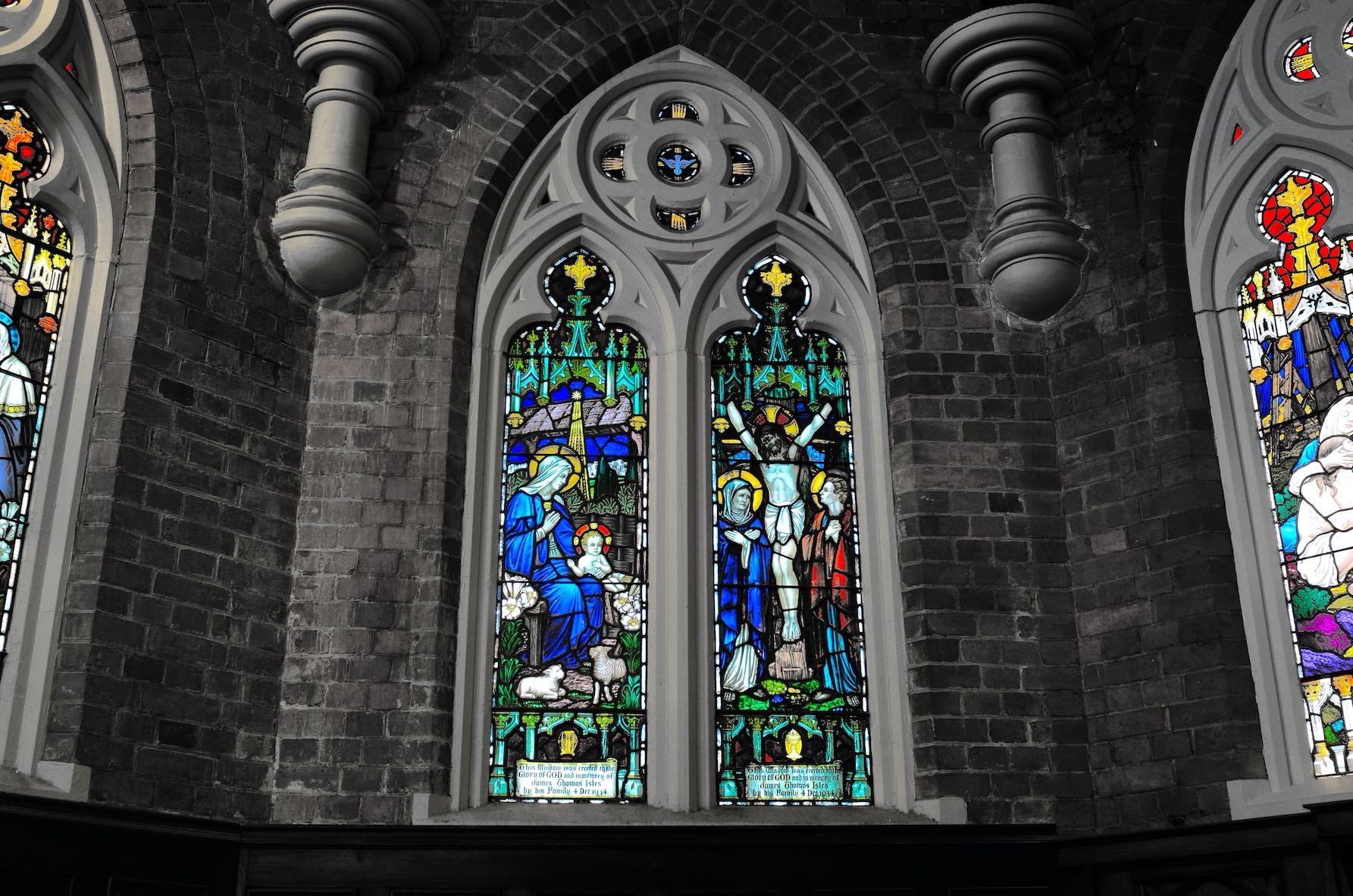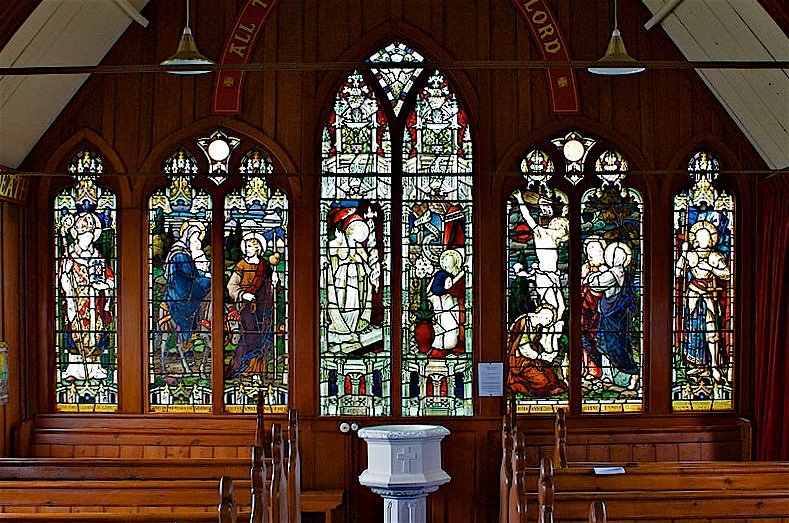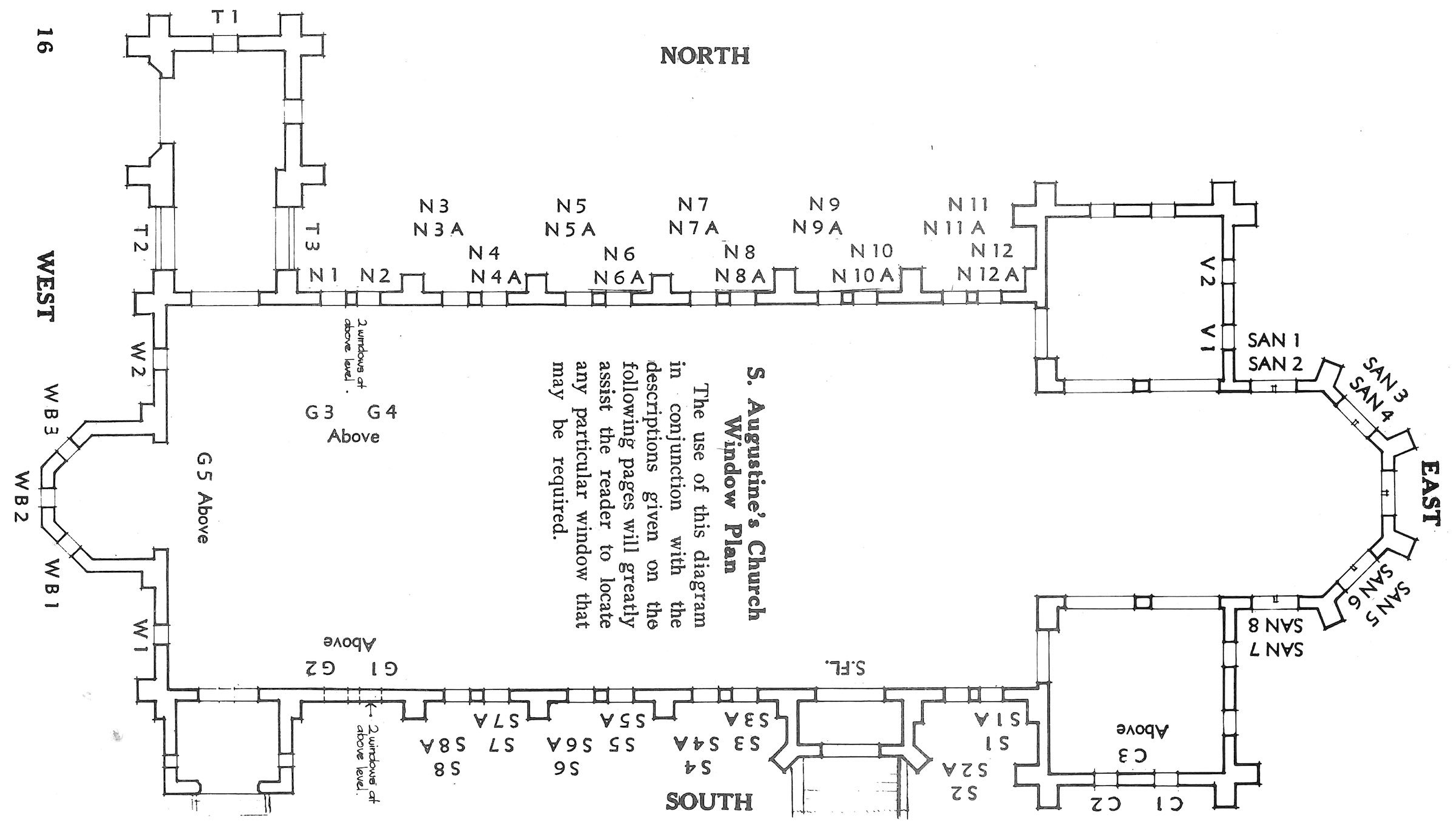
THE ‘JEWEL BOX’
Windows of St Augustine’s
St Augustine’s is a place of particular historical significance, in part as the church displays what is believed to be the only complete set of stained glass windows designed by renowned designer, William Bustard.
The church windows follow a theme and have an extensive history. There are some basics though that help to understand this large number of windows.
The east sanctuary windows were originally crafted in Germany after the First World War. The windows were meant to assist reconciliation, but wounds were too deep, too fresh. It was so difficult that the priest of the time resigned, and it is assumed the Wharfies did not deliver the two central windows. At any rate, they never arrived in Brisbane. They were discovered in St Barnabas Warrington, New Zealand some years ago. One of these windows is of St Augustine.
Image courtesy of Wikipedia – St Barnabas Warrington NZ
After World War II, there was a resolve by the priest, perhaps in the light of what had previously happened, to commission all the windows to a single artist. There was money and incentive at the time. The windows show a clear theme, and are not at random.
The sanctuary windows represent the Annunciation (when Gabriel appeared to Mary), the Visitation (when Mary visited Elizabeth, mother of John the Baptist), the crucifixion, and the birth of the church and its commissioning. At one stage the theme included the exultation of the Holy Spirit. The centre two windows that were never received from Germany were boarded up, until the new windows were installed for 2015, designed to represent the cost of war to families as in Afghanistan and Iraq. They have the darker yellow colours representing these countries. The first window is the crucifixion and represents the cost of war to families. The second window shows a woman in a downcast position behind Mary Magdalene who holds her head looking upward for reconciliation and hope (rather than war) and in the risen Christ.
The north windows show biblical scenes with symbolic pictures at the top, and life of the saints at the bottom.
The south windows show English scenes, such as St Augustine, or various Kings.
The baptismal area has pictures of Jesus as the good shepherd and Jesus with children.
The bell tower windows are of the Armed forces, acknowledging the women and men services for the forces.
The two windows on the west wall beside the baptismal area are of Christ – I am the Light, and I am the Bread.
The gallery Te Deum windows are very complex in story and detail. They include martyrs from Queensland – three women who were speared to death by Japanese forces of the time.



